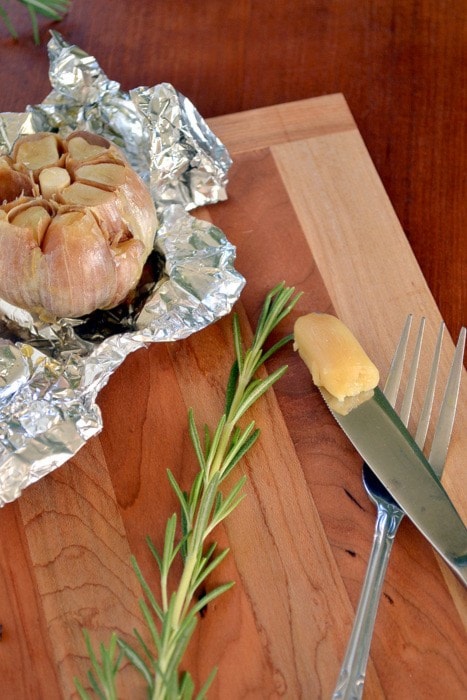If you've looked into the world of garlic outside the grocery store, you'll know that it can be quite overwhelming at first. There are so many different varieties and classifications of garlic that can make it difficult to shop for the exact kind of garlic you're looking for because every variety of garlic is unique. But don't be afraid to try something new! As overwhelming as it can be, the friendly vendors at the Creston Valley Farmers’ Market will help you find the perfect garlic for you and what you're cooking.
The two main varieties of garlic are hardneck and softneck. The twisty garlic scapes you can find at the market in the spring usually come from many different hardneck varieties. While hardneck varieties don't store as long as softnecks, they can still be stored for quite some time when stored properly. Any kind of garlic should be stored in a cool, dark place and should be stored so that it has proper air circulation. Garlic is best if not kept in the fridge as it can go soft or even mouldy. It’s best if kept at room temperature or slightly cooler. Once cloves have been removed, the life of the remaining bulb is shortened and the cloves that have been removed should be used right away or stored in the fridge until needed.
To easily peel a clove of garlic, unwrap the loose papery skin and slice the end off the clove. Place it on the counter and place the flat side of a large knife on top of the clove while holding the handle and firmly hit the knife over the garlic with the palm of your free hand. The skin should pull away easily; if not, hit it again, just hard enough to break the skin, but not completely crush the clove. You can also blanch large quantities of garlic for easier peeling by separating the cloves and dropping them all into boiling water for 10-20 seconds. Drain the cloves and plunge them into cold water before easily pulling the skins away.
Here in the Creston Valley, we have so many different varieties of garlic. While different varieties of garlic can be used in many different ways and in many different dishes, some are well suited to specific dishes, like the flavour of Rocombole varieties (Russian red, German red, Asian tempest, Spanish roja being just some of the varieties grown locally) is well suited to dishes such as pesto, where the garlic is a main flavour. All varieties of garlic can be eaten raw, although some specific varieties can be especially spicy while raw such as Susan Delafield, Leningrad, Asian tempest and Russian red.
The especially large bulbs, such as German red, are great for roasting. Roasting garlic softens the cloves to make a creamy, almost sweet, spreadable garlic that is much more mild in garlic flavour, but still rich and full of toasty garlic flavour. This method of preparing garlic is great for anyone who loves garlic, but is also a great option for anyone that isn’t as fond of it because it takes away the pungent, spicy taste of raw garlic that some people don't like. Roasted garlic can be used almost anywhere raw garlic is used; just be sure to use at least twice as much roasted garlic, if not much more, as the flavour isn’t as strong as raw garlic. I particularly like substituting roasted garlic for raw garlic in any dips or spreads or even salad dressings where raw garlic would be used, our favorite dip being hummus.
It’s also great in mashed potatoes, in roasts and stews, and even spaghetti sauce. You can mix it with butter to make a garlic compound butter, or you can even spread the roasted cloves directly on fresh crusty bread and enjoy. You can roast a few heads of garlic at a time because any leftovers can be stored in the fridge for up to a week, or frozen to add to dishes whenever needed.
To roast garlic, preheat your oven to 350 C. Select your head(s) of garlic and remove the thin papery outer layers of skin as best you can. Then turn your head of garlic on its side and using a large, sharp knife, slice just the tops off all the cloves. If a few smaller cloves aren't exposed, use a small paring knife to cut the tops off. Then place your head of garlic on a small square of foil just big enough to wrap the garlic. Drizzle each head of garlic with one or two teaspoons of extra virgin olive oil and then wrap up with the foil. Place it on a baking sheet and bake for 45-60 minutes, depending on the size of the head of garlic. To test if the garlic is done, remove it from the oven, carefully unwrap it, and use a butter knife to make sure that the individual cloves are very soft. Enjoy immediately or refrigerate for later.
Heidi Bjarnason is a Creston Valley mom and blogger. For more recipes, ideas, pictures and kid friendly ideas and food, visit Fooddoodles.com
To find many different varieties of garlic, visit the Creston Valley Farmers’ Market, indoors at Morris Flowers Garden Centre from 10 a.m.-2 p.m. each Saturday until Christmas.
